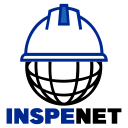More than 63% of rivers and lakes in the European Union suffer from severe pollution, and current monitoring relies on infrequent manual measurements. This is why WaterSense, a technological solution developed in Poland, proposes a paradigm shift in the way inland water resources are measured and managed.
The tragedy that drove change
WaterSense was born as a direct response to the ecological disaster that occurred in the Oder River in the summer of 2022, where a toxic algal bloom caused the death of more than 360 tons of fish. This event highlighted the urgency of having technological tools capable of detecting changes in water quality continuously and accurately, without relying on sporadic manual interventions.
How does WaterSense work?
The core of the system is WaterStation, a fully autonomous floating monitoring station that uses printed disposable electrochemical sensors that measure more than 20 water parameters, such as pH, dissolved oxygen, nitrates, chlorides or conductivity.
Each sensor lasts up to 12 months and is automatically replaced once a day, without the need for manual intervention, while the entire system is powered by a hydrogenator module that guarantees continuous operation throughout the year.
All this enables the system to anticipate changes in water quality up to 72 hours in advance. The solution is already being tested at more than 20 locations in cooperation with water companies and local authorities in Poland, including the city of Warsaw.
Differences compared to other systems
The collected data is transmitted via GSM to a proprietary cloud called WaterCloud, and is publicly available through www.watermap.pl. In addition, a predictive model developed with AI, called WaterForecast, is able to warn of possible contamination three days in advance.
On the other hand, other similar solutions are limited to the detection of detecting contamination while WaterSense can diagnose the evolution of water quality even before harmful events occur. In addition, the system performs automatic calibrations of its sensors with integrated dosed solutions, which maintains laboratory quality without constant maintenance.
Future plans
Following trials in Poland, the company plans to launch a fullmodular version of the system in 2025, expand to other European countries by 2026 and enter the U.S. market by 2027. Its goal is to democratize access to real-time water quality data and improve response to environmental threats.
WaterSense has already been honored in awards such as the ING Grants Program, Warsaw Booster 25 and the Carpathian StartUp Fest 2024. It has also been featured by the Polish EU presidency in the #WeDidItInPoland campaign, highlighting its potential to contribute to the continent’s green transition.
Source: WaterSense


